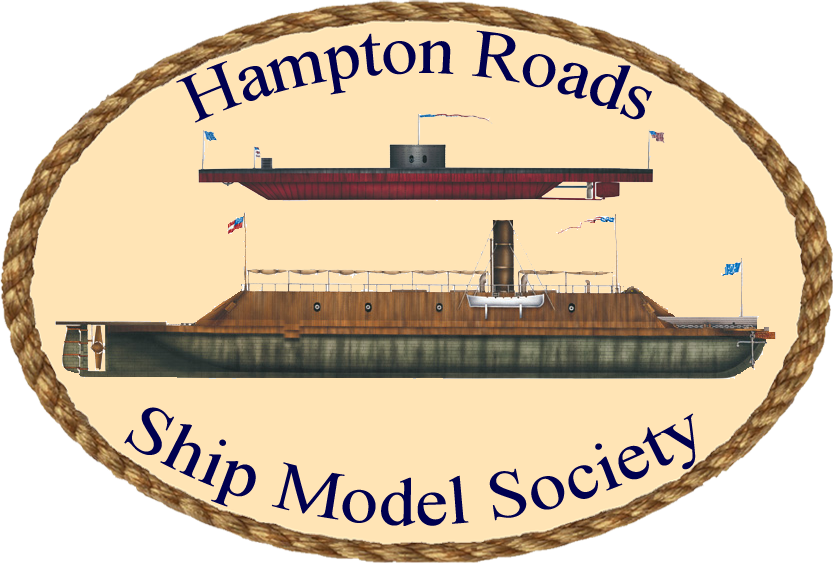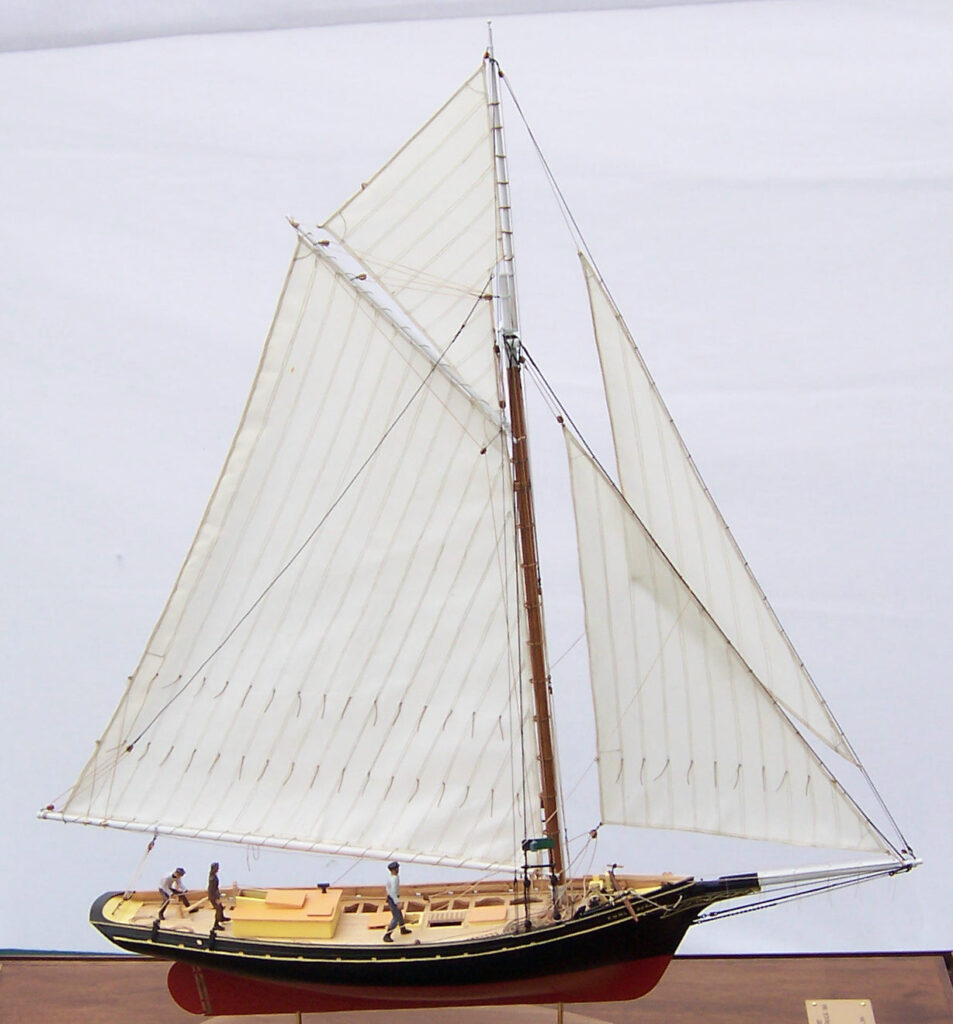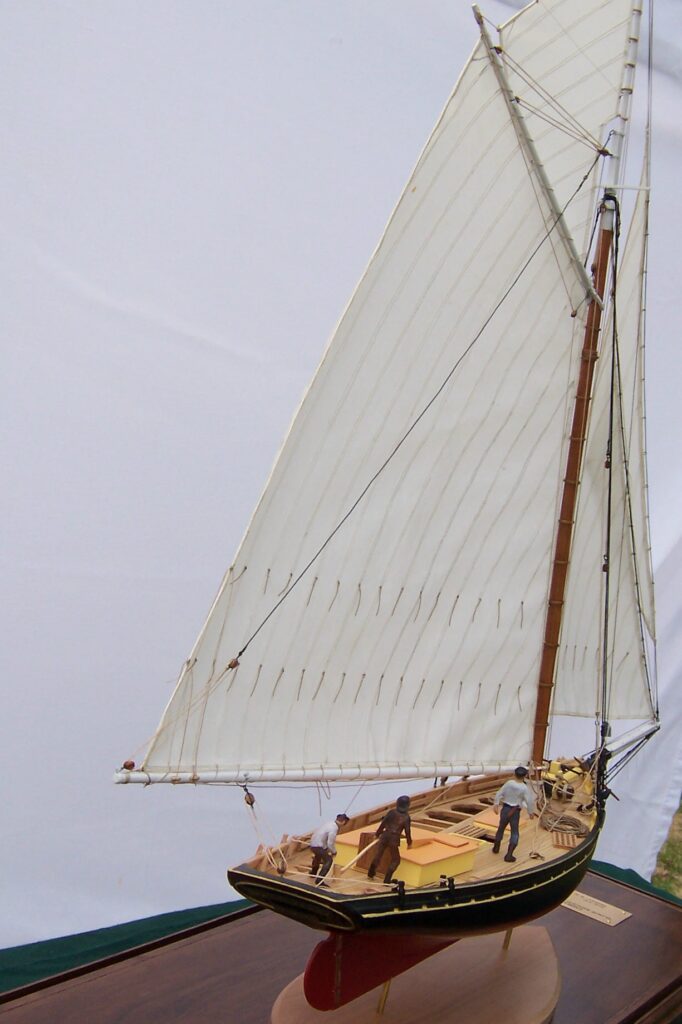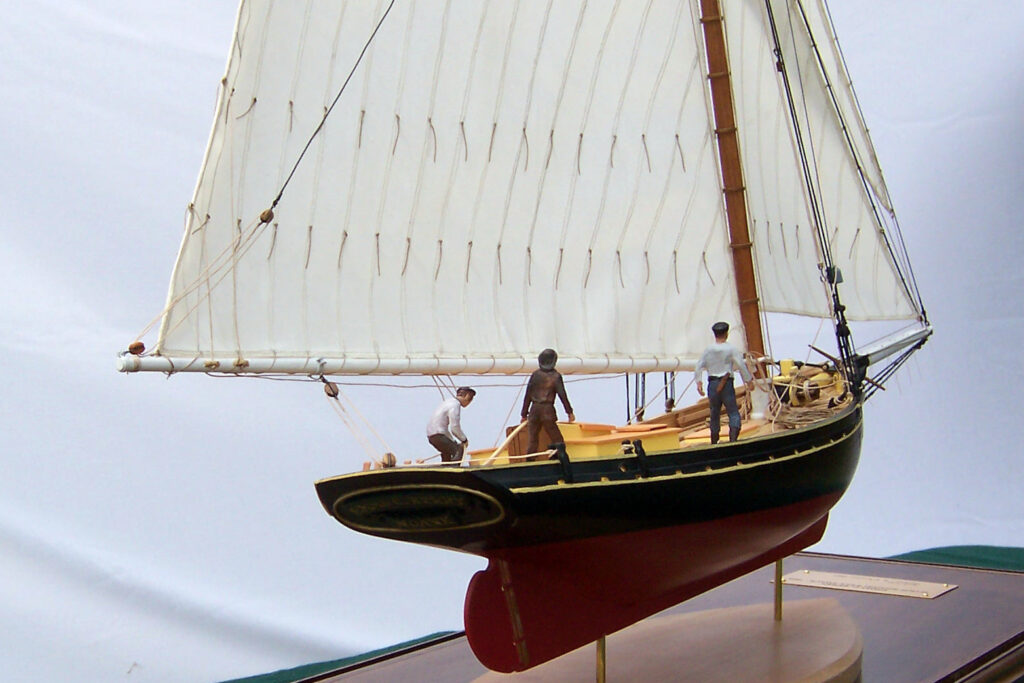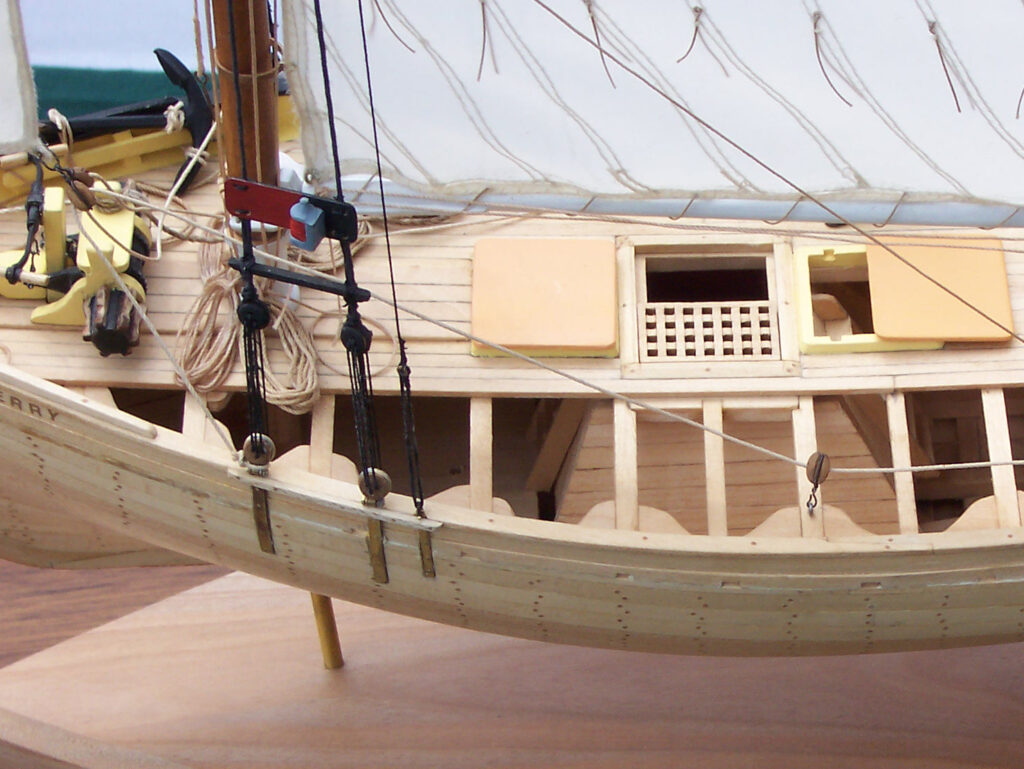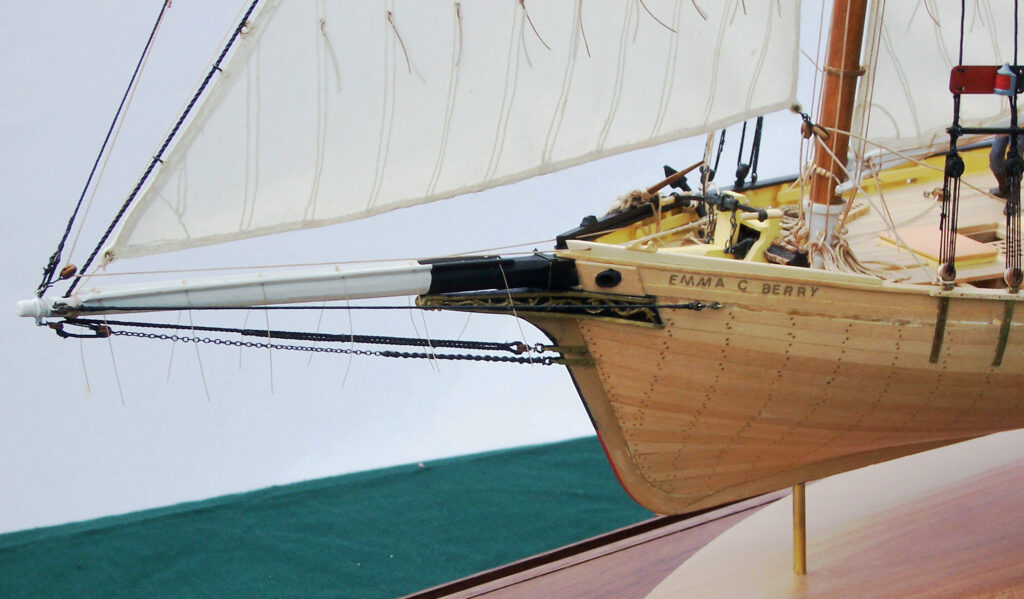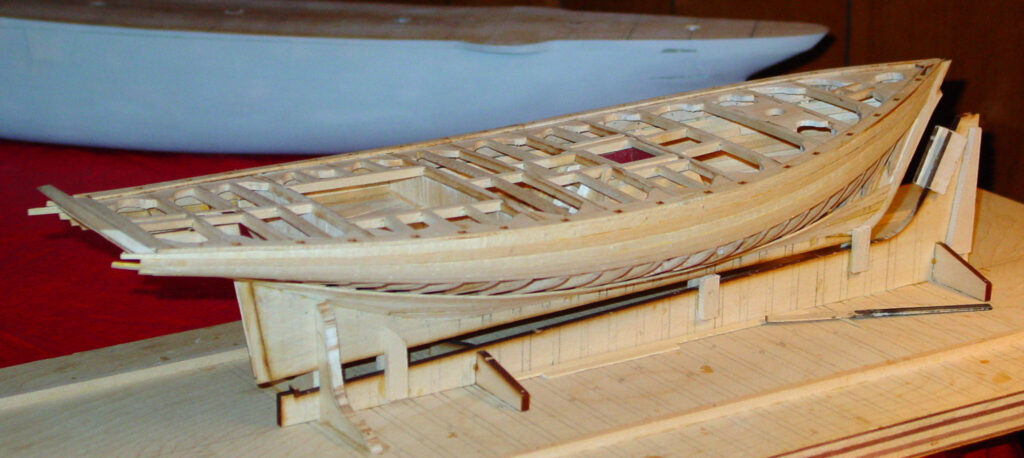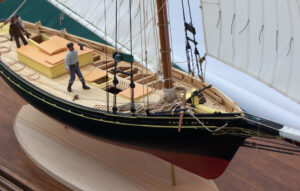
by Bob Comet
Categories:
- Build type: [Kit][Model Shipways]
- Material: [Wood]
- Scale: [1:32 (3/8" = 1')]
- Subject Type: [Fishing]
- Era: [1815-1914]
- Nationality: [United States]
- Propulsion: [Sail]
Model Images
About the Vessel
Emma C. Berry is a fishing sloop built in 1866 at the Palmer Shipyards in Noank, Connecticut by James A. Latham. She is now part of the Mystic Seaport Museum in Mystic, Connecticut. She is one of the oldest surviving commercial vessels in America, and was declared a National Historic Landmark in 1994.
About the Model
The model was built using the Model Shipways kit, which is based on drawings and documentation provided by the Henry B. duPont Preservation Shipyard at Mystic Connecticut. The kit is a true plank on frame kit designed by Ben Lankford.
In building the kit, I installed ceiling in the interior spaces as well as constructing the fish well, with access ladders and holes for ingress of seawater. The trunk cabin is built so it can be lifted off. The interior of the cabin is fitted with two bunks and a stove, complete with metal sheathing behind and under the stove, and the stove flue is lined up with the smokestack in the roof of the cabin trunk. A section of the deck planking is left off the port side to allow a view of the interior hull construction.
The port side of the hull is left unpainted, covered only with lacquer sealer to show the construction of the planking complete with treenailing to the frames. The starboard side of the ship and deck fittings are painted using colors recommended by the kit instructions. All metal fittings on mast head, booms and gaff are scratch made of brass, with appropriate nuts soldered on bolts, etc. The kit blocks were reshaped to the proper oval, rounded shapes. Wooden bullseyes and hearts were scratch made from boxwood as needed.
The model is presented under full sail on the starboard tack in a light breeze. Sails were all scratch built with sewn hems and seams. Boltropes were hand sewn on all sails, joined together with a long splice to make a continuous run as is proper in a real sail. Scale thimbles were turned into heads, tacks and clews. The sails were set using water-soluble polyurethane, blown dry into shape with a hair dryer. Scratch made shackles were used throughout the rigging as appropriate. The shrouds are fully served, as is the bottom half of the chain bob stay. As appropriate, splicing and seizing are used throughout. Chain plates and brass strops, bolts and nuts on bottom deadeyes were scratch made to scale.
The trail boards are carved in bas-relief using holly, and painted with gold paint. The stern has the name board and registry port incised on decorative ribbon work, glued and pinned to the counter.
The winch pump handles are scratch built from brass and wood. The rudder work is made in brass and copper as shown for the actual vessel.
Three figures were scratch made to scale. The helmsman is in oilskins and sea boots. The skipper walking forward has a peaked cap, a fisherman’s sweater and sea boots, and a sailor’s knife at his belt. The figure aft is hauling on the jib sheet. His red hair and tam suggests he might be of Irish origin, and he too has sea boots and a fisherman’s sweater. The figures are made of skulpy over a brass wire skeleton and painted with acrylic paint.
400 logged hours to complete the model.
Links
- Mystic Seaport, current home of Emma C. Berry
- Wikipedia
- Model of Emma C. Berry by HRSMS member Ulrich Guenther
- Model of Emma C. Berry by HRSMS member Mike Amicone
